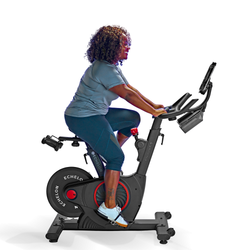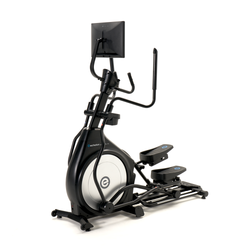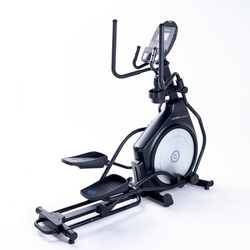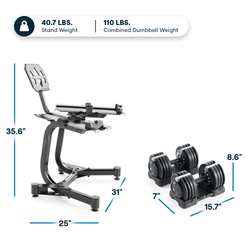Exercising Away Stress: Your Guide to a Calmer April

Stress is a common experience for many people, but it's important to recognize the negative impact it can have on our overall health and well-being. As April is National Stress Awareness Month, it's the perfect time to focus on finding ways to reduce stress in our lives. One effective way to combat stress is through regular exercise. In this blog post, we will explore the benefits of exercise for stress relief and provide you with a guide on how to incorporate exercise into your daily routine for a calmer April.
Understanding Stress and Its Impact
Stress operates as the body's instinctual response to situations perceived as demanding or threatening, initiating a "fight or flight" reaction that prepares us to confront or escape those challenges. However, when this response is constantly triggered by the pressures of modern life—be it from work, relationships, or financial worries—stress transitions from a temporary state to a chronic condition. This shift can significantly detriment our health. Chronic stress not only undermines our mental equilibrium but also wreaks havoc on our physical well-being. It can accelerate the aging process, disrupt our sleep patterns, and increase our susceptibility to illnesses by compromising the immune system. Moreover, chronic stress is a key contributor to major health concerns such as cardiovascular diseases, obesity, and diabetes, as well as mental health disorders like depression and anxiety.
Understanding the gravity of stress's impact is crucial. It affects not only how we feel on a day-to-day basis but also our long-term health and quality of life. Recognizing the symptoms of stress—such as irritability, fatigue, difficulty concentrating, and changes in appetite—is the first step in addressing and managing it effectively. By identifying these signs early, we can take proactive measures to mitigate stress through various strategies, including the powerful role that regular physical activity plays in maintaining mental health and emotional balance. Acknowledging the profound effects that prolonged stress has on our lives underscores the importance of adopting effective stress management techniques to nurture both our minds and bodies.
The Science Behind Exercise and Stress Relief
Engaging in physical activity initiates a fascinating cascade of biological processes that are instrumental in diminishing stress levels. Central to this physiological transformation is the release of endorphins, often heralded as the body's natural feel-good chemicals. These neurotransmitters, produced in the brain and nervous system, have the prowess to elevate mood, acting as natural analgesics to diminish perception of pain, thereby contributing to a sense of well-being and happiness.
Parallel to the endorphin surge, exercise stimulates a reduction in the body's stress hormones, specifically cortisol and adrenaline. Over time, regular physical activity can normalize cortisol levels, contributing to a reduction in the everyday stresses that can be so taxing on our physical and mental health. This hormonal balance is key to achieving a state of homeostasis where the body's systems operate optimally, promoting an environment less susceptible to stress.
The impact of exercise extends beyond these immediate biochemical changes. Engaging in regular physical activity fosters an improvement in sleep quality, a critical factor often disrupted by stress. The energy expenditure from exercise can help regulate the body's circadian rhythms, leading to more restorative sleep cycles that are crucial for stress recovery and prevention.
Moreover, exercise has been found to enhance cognitive function and increase the production of neurohormones like norepinephrine that are associated with improved cognitive function, elevated mood, and learning. This can directly combat the effects of stress on cognitive degradation, helping to maintain mental clarity and resilience in the face of stressors.
Thus, the relationship between exercise and stress relief is underscored by a multifaceted interplay of biological and psychological mechanisms. It's a testament to how adopting a regular exercise regimen can be a cornerstone in not just managing stress, but in fostering an overall healthier, happier life.
Identifying the Right Exercise for You
Choosing an exercise that you genuinely enjoy is pivotal in forming a lasting habit that can help in stress management. The diversity in exercise types ensures there's something for everyone, whether you’re drawn to the intensity of high-impact cardio workouts like running and HIIT (High-Intensity Interval Training), or you lean towards low-impact, calming activities such as Pilates and Tai Chi. It’s beneficial to explore a variety of physical activities to discover which ones resonate with you the most.
Group sports or classes can offer a social element that might enhance the stress-reducing effects of exercise, while solo activities such as swimming or cycling allow for introspective moments that can be equally therapeutic. If you're someone who finds joy in nature, outdoor activities like hiking or kayaking could provide the dual benefits of exercise and connection with the environment, further amplifying stress relief.
Remember, the best exercise for stress relief is one that fits seamlessly into your life and sparks joy. This personal affinity towards your chosen activity increases the likelihood of adherence and consistency, making it an effective tool in your stress management arsenal. Don't be afraid to experiment with different exercise forms and settings to find your perfect match. Listening to your body and respecting your personal preferences are key steps in identifying the right exercise for you, setting the stage for a more relaxed and stress-resilient self.
Integrating Exercise into Your Daily Routine
To seamlessly weave exercise into the fabric of your everyday life, it's imperative to view it not as a chore, but as a valuable component of your daily self-care regimen. Begin by examining your current schedule to identify pockets of time that could be dedicated to physical activity. This might mean waking up 30 minutes earlier to fit in a morning jog, or utilizing the time typically spent scrolling through social media for a quick home workout session.
Creativity plays a crucial role in incorporating exercise into a bustling lifestyle. For instance, consider bike commuting to work or opting for the stairs over the elevator. These small changes not only contribute to your overall physical activity but also break the monotony of a sedentary routine, making your day more dynamic and energized.
To ensure adherence, anchor your exercise routine to certain cues or existing habits. You might, for example, tie your workout sessions to specific triggers such as exercising right after dropping the kids at school or immediately following your evening shower. This method helps in building a natural and effortless association between your daily activities and exercise, enhancing the likelihood of consistency.
Moreover, leveraging technology can simplify this integration process. Utilizing fitness apps or setting calendar reminders can act as both a planning tool and a motivational booster. These digital aids provide structure, enable you to visualize your exercise slots throughout the week, and serve as prompts to keep you accountable.
Engagement with a community, whether virtual or in-person, can also magnify your commitment. Joining fitness classes, clubs, or online groups adds a layer of social interaction and support that can be incredibly motivating. Sharing your journey with others not only fosters a sense of camaraderie but also introduces an element of accountability that can propel you to stick with your routine.
Remember, integrating exercise into your daily life is about making it a habit that fits naturally with your lifestyle and preferences. By taking practical steps and being mindful of your unique circumstances and needs, you can craft an exercise regimen that not only combats stress but also enriches your daily experience.
Setting Realistic Goals and Tracking Progress
Embarking on an exercise journey for stress relief requires a thoughtful approach to setting achievable goals. It's crucial to tailor your objectives to your current fitness level and lifestyle, ensuring they are attainable and realistic. Begin with modest targets, such as incorporating 15 to 20 minutes of exercise three times a week, and gradually intensify your regimen by increasing duration or adding more challenging activities as your stamina and strength improve.
Documenting your progress is an integral part of this process. Utilize a journal or a fitness app to log each workout, including the type of activity, duration, and any feelings or physical responses you notice before and after exercising. This practice not only serves as a tangible record of your achievements but also enables you to reflect on the emotional and physical benefits you're experiencing, reinforcing the positive impact of exercise on your stress levels.
Adjusting your goals over time is also essential. As you become more accustomed to your routine, revisit and revise your objectives to keep yourself challenged and engaged. This might mean setting new benchmarks for intensity, trying different forms of exercise, or even participating in community fitness events. The key is to maintain a dynamic approach that keeps you motivated and committed to your stress-reduction journey through exercise.
In this endeavor, remember that progress is not always linear. There may be days when achieving your exercise goals seems challenging. Recognize these moments as part of the journey, and use them to reassess and adapt your goals if necessary. By maintaining flexibility in your approach and celebrating each step forward, you'll cultivate a sustainable exercise habit that significantly contributes to stress management and overall well-being.
The Role of Consistency and Patience
Adopting exercise as a regular component of your stress management strategy necessitates a commitment to both consistency and patience. Embedding physical activity into your daily routine isn't merely about achieving immediate relief; it's about fostering long-term resilience against stress. To this end, establishing a steady cadence of exercise, even on days when motivation wanes, is crucial. It's these moments, when exercising feels most challenging, that maintaining your regimen can yield profound benefits in stress reduction and mental clarity.
Patience plays an equally pivotal role in this journey. The transformational effects of exercise on stress levels unfold over time, not overnight. There may be instances where progress seems slow, or the impact on stress appears minimal. It's during these periods that patience becomes your greatest ally. Encourage yourself to persevere, understanding that each step, no matter how small, is a vital component of a larger, cumulative process toward greater well-being.
Incorporating variety into your exercise routine can also aid in sustaining both consistency and patience. By exploring different types of activities, you not only keep your routine engaging but also mitigate the risk of burnout or boredom, which can impede your progress. Whether it's alternating between cardio, strength training, and flexibility exercises or blending indoor workouts with outdoor adventures, diversity in your physical activity can renew your enthusiasm and commitment.
Ultimately, embracing consistency and patience in your exercise endeavors not only enhances your capacity to manage stress but also cultivates a deeper appreciation for the journey itself. It's through this steady, patient approach that the path to a calmer, more resilient self is carved.
Complementing Exercise with Other Stress-Reduction Strategies
While integrating exercise into your routine is a cornerstone for alleviating stress, it's just one piece of the puzzle. Achieving a comprehensive stress management plan requires a multifaceted approach. Mindfulness and meditation practices offer a profound sense of calm and present-moment awareness, serving as a counterbalance to the hustle of daily life. Techniques such as deep breathing, guided imagery, and mindful walking can complement physical exercise by addressing stress on a psychological level.
Prioritizing sleep is another essential strategy. Quality sleep rejuvenates the mind and body, enhancing resilience to stress. Establishing a regular sleep schedule and creating a restful environment free from electronic distractions can significantly improve sleep quality.
Nutrition plays a role in how effectively we manage stress. Consuming a balanced diet rich in fruits, vegetables, lean proteins, and whole grains provides the nutrients necessary for maintaining optimal health. Limiting intake of caffeine and sugar can also help in moderating stress levels.
Social support is invaluable. Sharing your experiences, challenges, and successes with friends, family, or support groups can provide comfort and reassurance. For some, professional support from a therapist offers a structured approach to understanding and managing stress, providing tools and strategies tailored to individual needs.
By blending exercise with these additional strategies, you create a well-rounded approach to stress reduction. This holistic perspective not only enhances your ability to cope with stress but also enriches your overall quality of life, fostering a sense of balance and well-being.











































































